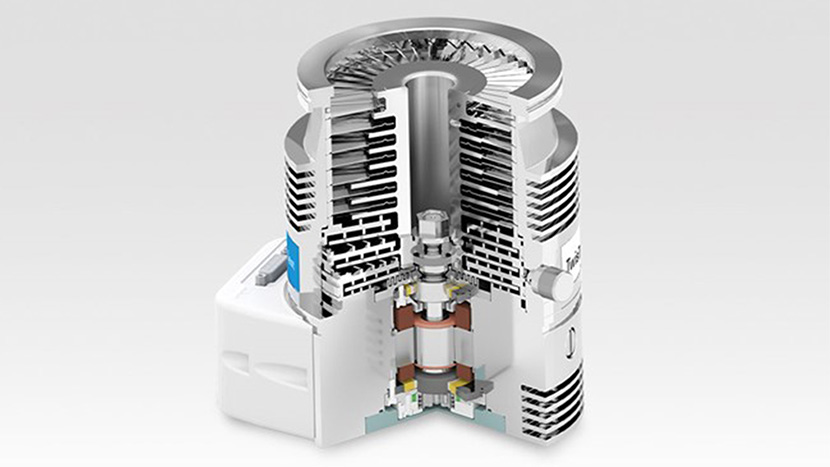Vacuum Technology and the Power of Synchrotrons: Everything You Need to Know About These Versatile Scientific Tools and the Challenges They Overcome
Have you ever wondered how scientists generate those stunning X-ray images that reveal the fine and intricate details of biological and material samples? Look no further than synchrotrons – circular particle accelerators that energize electrons to produce intense beams of X-rays, infrared, and ultraviolet light. These powerful machines, developed initially to create particle collisions, have evolved into highly-tunable light sources, making them an essential tool in a variety of scientific fields today.
What exactly are synchrotrons?
Synchrotrons are among the world’s most powerful and versatile scientific tools. They are particle accelerators that can generate powerful light beams ranging from X-rays to ultraviolet and even infrared radiation.
At their most basic level, synchrotrons operate by using powerful electromagnetic fields to accelerate electrons or other charged particles to extremely high speeds. These particles are then directed into a circular path and made to flow around the accelerator ring close to the speed of light. As they do so, they emit a continuous stream of radiation that is then focused into intense beams using sophisticated optical systems.
Synchrotrons applications
The key to synchrotrons’ success is their ability to produce radiation of many different wavelengths, from microwaves to X-rays. As a result, they are extremely versatile scientific instruments that can be used for a wide range of applications, from studying the atomic and molecular structure of materials to analyzing the behavior of proteins and other biological molecules.
Aside from scientific applications, synchrotrons have a wide range of practical applications in industry, medicine, and other fields. They are used in the development of new drugs and medicines, for example, as well as the production of new materials and the analysis of forensic evidence.
Although synchrotrons are a type of particle accelerator capable of producing high-intensity X-rays, they are used in medical imaging as well. Synchrotrons are very large tools, they require specialized facilities and expertise. Medical X-ray machines use a lower energy level that produces clear images of the body while reducing the risk of harmful radiation exposure.
Overall, synchrotrons are pretty astonishing machines that have transformed our understanding of nature and our ability to manipulate it. They are proof of the power of human intelligence and the limitless possibilities of vacuum technology and scientific discovery.
Synchrotron Vacuum Challenges: Overcoming the Obstacles to Optimize Performance
What are the challenges that synchrotrons face?
Keeping synchrotrons running smoothly usually involves overcoming some substantial challenges. Strong magnetic fields, wide temperature ranges, and tight space for vacuum pump installation are obstacles that engineers and scientists must compete with when designing the acceleration system and vacuum apparatus.
Synchrotron Vacuum Challenges (and Solutions)
Synchrotrons’ Intense Vacuum Requirements
One of the most difficult aspects of maintaining a synchrotron vacuum system is dealing with the intense magnetic fields and electromagnetic interference produced by power generators. This requires a sophisticated understanding of the system’s requirements as well as careful vacuum system design.
Managing Both Gas Loads and Pump Placement in an Effective Design
Creating a vacuum with synchrotron technology is an ongoing process. One of the most difficult challenges in designing a synchrotron vacuum system is managing the amount of gas generated by desorption. This process generates a gas load, which must be pumped in order to maintain the required level of vacuum.
Because even a trace amount of gas can interfere with the electron beam, the vacuum system must constantly pump any gas molecules released during operation.
To complicate matters further, modern synchrotrons are being designed with smaller vessel cross-sections in order to reduce costs and improve magnet aperture. This means that there is less room for vacuum pumps installation, which can be a problem because the pumps must be located where the maximum pumping speeds are required.
Two factors influence the desired level of vacuum pressure in the system: the required beam lifetime and personnel safety. Residual gas molecules in the vacuum can reduce the electron beam’s lifetime, which is undesirable. Furthermore, when electrons interact with residual gas molecules, X-rays are generated, which can present a safety risk to those working near the synchrotron.
Agilent Solutions for Synchrotrons’ Vacuum
Agilent Vacuum Technology provides a variety of vacuum solutions designed to work with large and complex systems that require an ultrahigh or extreme high vacuum. These solutions include different types of pumps, such as dry rough pumps, turbo pumps for high vacuum (visit the Agilent website here), high-performance ion pumps, and non-evaporative getter pumps for ultrahigh vacuum. Agilent’s vacuum measurement products and pump controllers are also available to help operators monitor and control the vacuum system accurately and remotely.
Synchrotron vacuum systems are constantly evolving as new technology is developed. Researchers and engineers are always looking for ways to improve the performance and efficiency of the vacuum system to maximize the scientific output of the synchrotron.
With Agilent’s advanced solutions, synchrotron operators can address the challenges posed by vacuum systems and achieve optimal performance from their synchrotron. Discover the latest vacuum technology advancements here.
Synchrotron development today
Synchrotrons are extremely powerful machines that have revolutionized our understanding of the world around us. Synchrotrons face significant challenges, such as the presence of strong magnetic fields, temperature changes, and compact design. Despite these issues thanks to industrial partners in all the disciplines (including vacuum), scientists and engineers have developed advanced solutions to overcome obstacles. Agilent Vacuum Technology offers a number of vacuum solutions that are intended to improve the performance and efficiency of synchrotron systems.
Synchrotrons will continue to be an important tool in a variety of scientific fields and industries, pushing the boundaries of scientific discovery and innovation as they advance and improve.



































































































